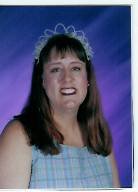
Nelson, M. (2005). A wreath for Emmett Till. Illustrated by Philippe Lardy. Boston, MA:
Houghton Mifflin Company.
Houghton Mifflin Company.
Book Type/Pages:
Picture/48
Grade Level:
fifth grade through high school
Curriculum Links:
social studies
Author Credibility:
Marilyn Nelson has written several award winning poetry books. For this book, she writes in her introductions that she researched information on lynching. She also mentioned knowing she would write about Emmett Till since the tragedy happened when she was nine and was a part of her life from then on. In the back of the book, she lists a bibliography of books about Emmett Till.
Awards:
2006 Notable Social Studies Trade Books for Young People
2006 Coretta Scott King Honor Book
2006 Michael L. Printz Award
2005 Boston Globe-Horn Book Award
2006 ALA Best Book for Children
2006 Lee Bennett Hopkins Poetry Award Honor
2005 Publishers Weekly Best Books of the Year
2005 Kirkus Reviews Best Books of the Year
2005 Booklist Editors’ Choice
2006 Notable Children’s Book in the area of Language Arts
Book Summary:
This is a book written about Emmett Till. It is written in a series of sonnets. The book builds a wreath or crown of flowers in memory of Emmett Till while weaving the sonnets together. Symbolism in the illustrations and within the poem reflects the honor that Emmett’s memory deserves.
National/State Standards:
Social Studies Standards:
Time, Continuity, and Change
Individuals, Groups, and Institutions
Power, Authority, and Governance
Illustrations/Graphics:
The illustrations of this book are made from tempera paint on cardboard. Most of the illustrations cover an entire page. There are also several two page spreads that are just illustrations. The illustrations are powerful and symbolic of the hate crime they represent. One illustration is of coffins with flowers inside and one contains the silhouette of Emmett Till. When turned on their side, these coffins resemble the Twin Towers. In the artist’s note, he gives explanation to his choice of illustrations and what each part represents.
Access Features:
Important access features in this book include an introduction by the author titled “How I Came to Write This Poem,” biographical information on Emmett Till, sonnet notes that explains the symbolism in each sonnet, an artist’s note and a reference list. Each two page spread consists of one sonnet and an accompanying illustration.
Use in My Classroom:
This would be a book I would use in the study of the Civil Rights Movement and Black History Month.
My Response to the Book:
This was an interesting book. The poem format was engaging and allowed the story to be told with numerous symbols. This is a book that would generate a heated discussion with my students and would cause them to think. I believe it would be a great spark for a series of class discussions on race relations.
Related Texts:
The Story of Ruby Bridges by Robert Coles.
If a Bus Could Talk: The Story of Rosa Parks by Faith Ringgold
Martin’s Big Words: The Life of Dr. Martin Luther King, Jr. by Doreen Rappaport
Rosa by Nikki Giovanni
The Forbidden Schoolhouse: The True and Dramatic Story of Prudence Crandell and
Students by Suzanne Jurmain
Moses: When Harriet Tubman Led Her People to Freedom
by Carole Boston Weatherford
Through My Eyes by Ruby Bridges
Martin Luther King, Jr. by Mary Winget
Related Web Site referenced in the book:
www.pbs.org/wgbh/amex/till



















No comments:
Post a Comment